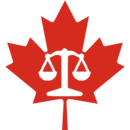| Part of a series on |
| Canadian law |
|---|
 |
Canadian Aboriginal law is the body of law of Canada that concerns a variety of issues related to Indigenous peoples in Canada.[1] Canadian Aboriginal Law is different from Canadian Indigenous law: In Canada, Indigenous Law refers to the legal traditions, customs, and practices of Indigenous peoples and groups.[2][3] Aboriginal peoples as a collective noun[4] is a specific term of art used in legal documents, including the Constitution Act, 1982, and includes First Nations, Inuit and Métis people.[5][6] Canadian Aboriginal law provides certain constitutionally recognized rights to land and traditional practices. Canadian Aboriginal Law enforces and interprets certain treaties between the Crown and Indigenous people, and manages much of their interaction.[7] A major area of Aboriginal law involves the duty to consult and accommodate.
- ^ Hogg, Peter W., Constitutional Law of Canada. 2003 Student Ed. Scarborough, Ontario: Thomson Canada Limited, 2003, page 631.
- ^ John Borrows (2006). "Indigenous Legal Traditions in Canada" (PDF). Report for the Law Commission of Canada. Law Foundation Chair in Aboriginal Justice and Governance Faculty of Law, University of Victoria.
In Canada, Indigenous legal traditions are separate from but interact with common law and civil law to produce a variety of rights and obligations for Indigenous people....Many Indigenous societies in Canada possess legal traditions. These traditions have indeterminate status in the eyes of many Canadian institutions.
- ^ Kaufman, Amy. "Research Guides: Aboriginal Law & Indigenous Laws: A note on terms". guides.library.queensu.ca.
Indigenous law exists as a source of law apart from the common and civil legal traditions in Canada. Importantly, Indigenous laws also exist apart from Aboriginal law, though these sources of law are interconnected. Aboriginal law is a body of law, made by the courts and legislatures, that largely deals with the unique constitutional rights of Aboriginal peoples and the relationship between Aboriginal peoples and the Crown. Aboriginal law is largely found in colonial instruments (such as the Royal Proclamation of 1763, the Constitution Acts of 1867 and 1982 and the Indian Act) and court decisions, but also includes sources of Indigenous law. "Indigenous law consists of legal orders which are rooted in Indigenous societies themselves. It arises from communities and First Nation groups across the country, such as Nuu Chah Nulth, Haida, Coast Salish, Tsimshian, Heiltsuk, and may include relationships to the land, the spirit world, creation stories, customs, processes of deliberation and persuasion, codes of conduct, rules, teachings and axioms for living and governing.
- ^ "Indigenous or Aboriginal: Which is correct?". September 21, 2016. Archived from the original on September 22, 2016. Retrieved November 19, 2020.
- ^ McKay, Celeste (April 2015). "Briefing Note on Terminology". University of Manitoba. Archived from the original on October 25, 2016. Retrieved 2 July 2020.
- ^ "Native American, First Nations or Aboriginal? | Druide". www.druide.com. Retrieved May 19, 2017.
- ^ Campagnolo, Iona (13 January 2005). "Kyuquot First Nation Community Reception: Remarks by Lieutenant Governor Iona Campagnolo". Office of the Lieutenant Governor of British Columbia. Victoria: Queen's Printer for British Columbia. Archived from the original on 2007-09-27. Retrieved 29 September 2009.
